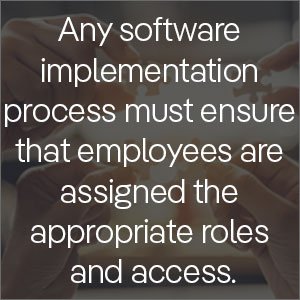During these times, technology has become a crucial part of ensuring business continuity. For companies to operate as usual – and even flourish – they need the right software to digitize documents, optimize workflows, work collaboratively with all employees, and stay organized while working remotely. And this calls for a sound software implementation process.
But let’s face it, implementing a CLM solution for legal documents can be a herculean challenge. It is even more difficult finding a system that meets all of your business needs. This requires extensive research and planning, as well as a huge financial investment.
Also, there are plenty of points to consider after implementing legal document management solutions in your organization. That is why many legal departments are only beginning to leverage this legal technology, according to Gartner’s 2019 Legal Department Operations Survey Report.
Here are important steps you can take while adopting new systems, for a more successful software implementation process.
1. Define the Business Need/Case
When you decide it is time for your company to invest in some form of legal technology, the first step is discussing a plan.
Be sure to get your general counsel (GC) and in-house counsels’ opinions on the matter. Ask them what they need help with within the legal department and what they are looking for exactly? For instance, do they need software that will support everyday legal processes or internal and external collaboration? Or both? Whatever it may be, it is essential to consider everyone’s viewpoint, especially the legal professionals who will use the product the most.
Remember also the plan that you come up with ultimately should also acknowledge the cost of the product and the total budget of your department and company.
2. Select a Vendor
When selecting a software vendor, make certain they 
Things you should not do while searching for and selecting a reliable vendor, include:
-
- Choosing a vendor that cannot supply a full end-to-end solution
- Choosing a vendor without a legal document agnostic system
- Choosing a vendor based solely on costs
- Self-selecting (Plain and simple!)
- Thinking about the software, alone (Implementation support is key, too!)
- Solving for “right now” instead of thinking more long term
For even more tips, check out our blog post about finding the right contract lifecycle management (CLM) vendor.
3. Configure, Customize and Integrate
A critical component of any software implementation process is ensuring employees are assigned the appropriate roles and access. The new software you adopt and implement should be easy to use and customizable. It should streamline and simplify your everyday workload, eliminate your manual review, and speed up all of your approval processes.
For successful integration, it is important to migrate your data from your previous system – or tool – into the new one. And the most effective solution can shorten this legal document migration process significantly. However, you still need to fully understand the data, along with its context, to migrate this information successfully.
To do all of this, you would do well to partner with an advanced software and services provider. They should not only offer powerful, user-friendly legal document management systems, and also provide legal engineers who know how to extract legal documents and their corresponding metadata.
4. Train and Test
So, it is finally time to train employees and test your new system. Take the extra time to show the ins and outs of the software to your legal team and other users. It will be absolutely new to everyone and completely custom to your company’s needs. As a result, the software training will be an ongoing process, with many practical hands-on sessions.
If your vendor has an implementation team, keep in touch with it regularly. Do not hesitate to ask questions or share concerns about on the software. Be sure you are getting the most from it – and getting what you need for continuous improvement.
Most of all, make certain you are never on your own once you purchase the system. The vendor you choose should always be approachable and ready to help, and never leave you in the dark.
A Successful Software Implementation Process
Indeed, the software implementation process is a huge undertaking – one that requires significant research and planning. So, creating a software implementation roadmap is essential to ensuring everything goes as planned.
For more information about contract management solutions, talk to a ContractPodAi expert today. Or check out our latest white paper, “How to Choose a Contract Management Solution.” It includes many helpful tactics and frameworks you can use in your own company.
Author:

Matt Gould
Connect with us on Linkedin




